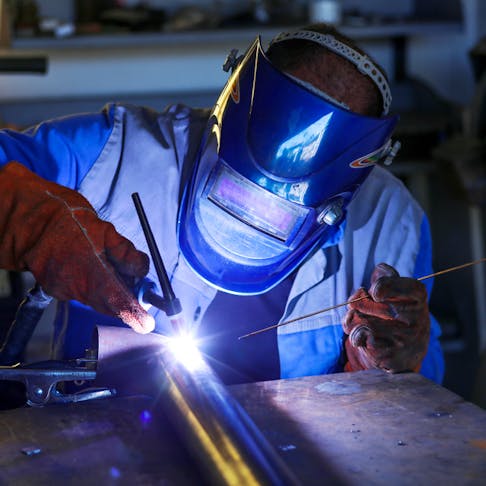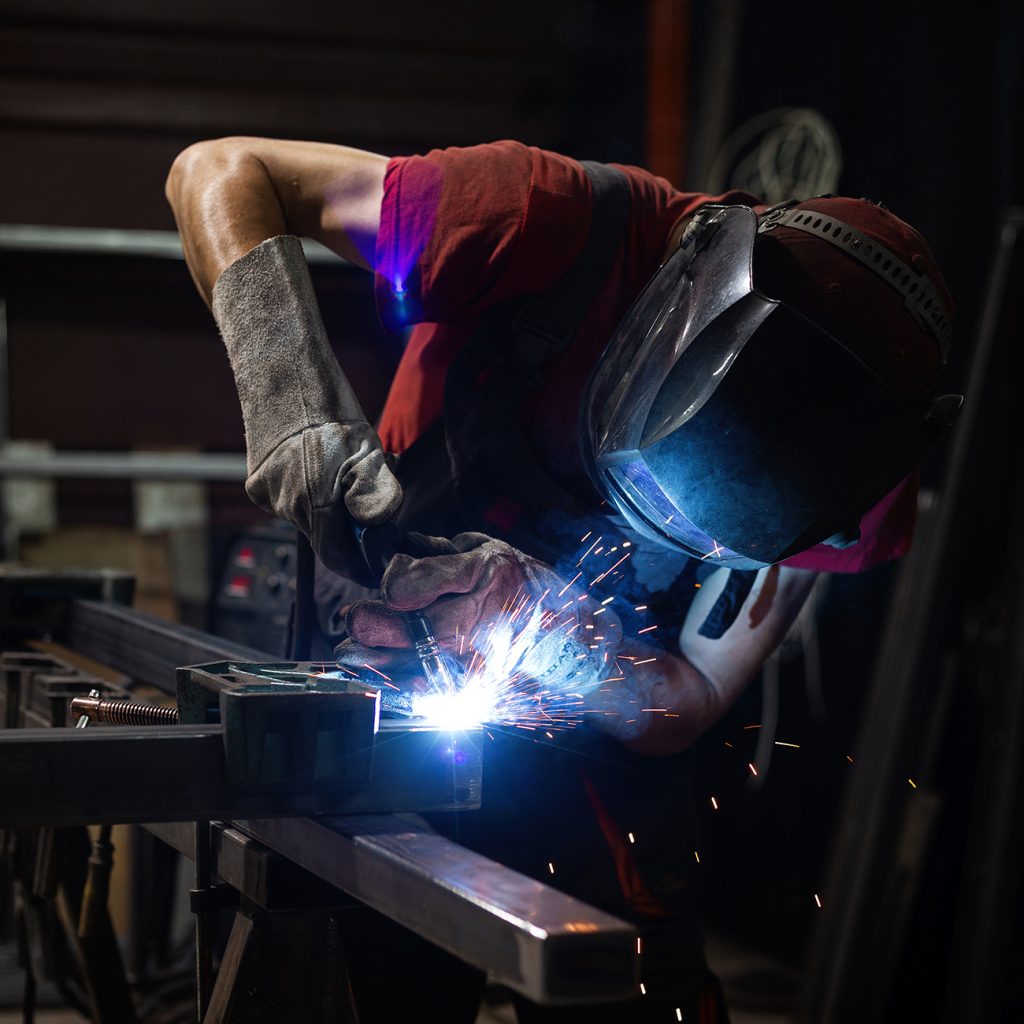All About Welding: Key Insights Into Techniques and Best Practices for Success
Welding encompasses a range of methods, each suited for specific materials and applications. Understanding these approaches, such as GMAW, SMAW, and TIG, is important for accomplishing suitable results. The ideal devices and safety and security methods can not be forgotten. As prep work and fixing play important roles in the welding process, mastering these components can substantially boost the top quality of the end product. What are the vital aspects that guarantee a successful weld?
Comprehending Various Welding Strategies
Welding techniques include a variety of methods, each matched to details applications and materials. Among the most common techniques are Gas Metal Arc Welding (GMAW), Shielded Steel Arc Welding (SMAW), and Tungsten Inert Gas Welding (TIG) GMAW, additionally referred to as MIG welding, is preferred for its speed and flexibility, making it optimal for thin materials. SMAW, or stick welding, is favored for its simplicity and performance in outside environments, particularly with thicker metals. TIG welding provides precision and control, making it ideal for elaborate job and non-ferrous steels (Belgrade Fabrication). Each method has its one-of-a-kind benefits and considerations, allowing welders to choose the ideal approach based on the project's requirements, material kind, and preferred end results. Recognizing these techniques is essential for successful welding
Necessary Welding Devices and Devices
While various welding methods need details skills, the ideal tools and tools are equally crucial for achieving quality outcomes. Important welding tools consists of welding devices, which vary depending upon the strategy-- such as MIG, TIG, or stick welding. Protective equipment, including helmets, aprons, and handwear covers, guarantees safety and security and convenience throughout the process. Additionally, fixtures and clamps help secure materials in position, making sure accuracy in welds. Consumables like welding rods, cord, and shielding gas are also important elements that affect the top quality of the weld. Tools such as cutters and mills help with surface preparation and post-weld completing, contributing to a professional outcome. Buying top quality equipment eventually enhances the performance and efficiency of welding projects.
Security Practices in Welding
Appropriate security methods are necessary in the welding market to secure employees from possible risks. Welders need to wear proper personal protective devices (PPE), including helmets with appropriate shading, handwear covers, and flame-resistant apparel. Adequate air flow is essential to decrease direct exposure to unsafe fumes and gases generated during the welding procedure. Additionally, employees ought to be trained in the appropriate handling of welding tools to stop accidents. Fire safety steps, such as maintaining flammable products away from the welding area and having fire extinguishers readily offered, are needed. Regular examinations of equipment and workspaces can aid determine potential threats prior to they bring about accidents. By sticking to these safety and security methods, welders can develop a more secure working environment and minimize risks connected with their trade.
Readying Products for Welding
Preparing products for welding is an important step that greatly influences the quality and honesty of the end product (Belgrade). Proper prep work entails cleansing the surfaces to get rid of impurities such as dust, rust, and oil, which can jeopardize the weld. Methods such as grinding, fining sand, or making use of solvents are frequently utilized to achieve a clean surface. In addition, guaranteeing that the materials mesh well is vital; gaps can lead to weak welds. It's likewise vital to take into consideration the placement and positioning of the elements, as this will impact the ease of welding and the final result. Picking the suitable filler material and ensuring compatibility with the base steels is vital for accomplishing strong, long lasting welds.
Tips for Getting High-Quality Welds
Achieving top notch welds calls for focus to information and adherence to finest methods throughout the welding procedure. Appropriate joint preparation is crucial, guaranteeing surface areas are totally free and tidy from contaminants. Choosing the ideal filler product and welding method based on the base steels is essential for perfect bonding. Keeping regular travel rate and angle while welding can stop issues and advertise harmony. Furthermore, regulating warm input is necessary; extreme warmth can lead to bending and damaged joints. If required, on a regular basis checking the welds during the procedure permits for instant adjustments. Using suitable post-weld treatments, such as cleansing and stress relief, can improve the resilience and honesty of the weld, inevitably making certain an effective end result.
Troubleshooting Typical Welding Issues
Welding typically offers obstacles that can affect the high quality and stability of the last product. Common issues such as porosity, irregular weld grains, and getting too hot can occur, each calling for certain troubleshooting techniques. Comprehending these problems is crucial for welders to boost their skills and accomplish optimal outcomes.
Porosity Issues Discussed
Although porosity can often be ignored, it remains a critical concern in welding that can jeopardize the integrity of a finished item. Porosity refers to the existence of tiny gas pockets within the weld grain, which Web Site can lead and compromise the joint to early failure. This problem generally occurs from impurities, moisture, or improper securing gas coverage throughout the welding process. To alleviate porosity, welders need to validate that the base materials are tidy and completely dry, make use of suitable shielding gases, and keep constant welding specifications. Frequently checking the equipment and atmosphere can likewise aid determine potential issues before they show up in the weld. Dealing with porosity effectively is crucial for attaining strong, durable welds that fulfill quality requirements.

Inconsistent Weld Beans
Irregular weld beads can greatly affect the top quality and stamina of a finished item. Numerous elements contribute to this issue, including improper traveling rate, inaccurate amperage settings, and irregular electrode angles. When the welder relocates too rapidly, a grain may show up narrow and do not have penetration, while moving too slowly can create excessive buildup. Furthermore, utilizing the wrong amperage can cause either undercutting or extreme spatter, both of which compromise weld integrity. The welder's strategy, such as inconsistent torch motion, can additionally cause unequal grain appearance. To minimize these issues, welders need to concentrate on keeping consistent, controlled movements and ensuring proper devices settings to accomplish harmony in their welds. Uniformity is key to attaining solid and trusted welds.
Overheating and Warping Issues
Excessive warm during the welding procedure can lead to significant getting too hot and deforming issues, affecting the architectural honesty of the work surface. These problems frequently manifest as distortion, which can jeopardize placement and fit-up, making further setting up challenging. Elements adding to overheating include the selection of welding parameters, such as voltage and travel speed, as well as the sort of product being bonded. To mitigate these issues, welders ought to preserve consistent travel rate and suitable heat input like this while keeping an eye on the work surface temperature. Additionally, pre-heating or post-weld warmth treatment can aid minimize stresses triggered by rapid air conditioning - Belgrade. Regular inspection and adherence to best practices are crucial in avoiding getting too hot and making certain the long life and dependability of bonded structures
Regularly Asked Concerns
What Are the Occupation Opportunities in the Welding Sector?
The welding sector provides varied profession chances, including placements as welders, teachers, engineers, and examiners. Specialists can operate in production, construction, aerospace, and automobile fields, have a peek at this site benefiting from solid demand and affordable incomes in various duties.
Just How Can I Improve My Welding Rate Without Compromising Top Quality?
To improve welding rate without sacrificing high quality, one need to exercise efficient strategies, preserve tools, maximize setups, and enhance hand-eye control. Routine training and looking for feedback can likewise significantly add to achieving much faster, premium welds.
What Qualifications Are Available for Welders?
Various certifications exist for welders, consisting of those from the American Welding Culture (AWS), the National Facility for Construction Education and Research (NCCER), and different industry-specific companies. These credentials boost employability and show ability effectiveness.
Exactly How Does Welding Impact the Qualities of Metals?
Welding affects the residential properties of steels by altering their microstructure, which can cause adjustments in solidity, ductility, and toughness. Warmth input and cooling prices throughout the procedure considerably impact these product features.
Can I Bonded Dissimilar Metals With Each Other?
